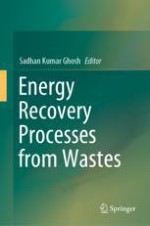2020 | OriginalPaper | Buchkapitel
Agricultural Wastes as Feedstock for Thermo-Chemical Conversion: Products Distribution and Characterization
verfasst von : Samarjit Gogoi, Nilutpal Bhuyan, Debashis Sut, Rumi Narzari, Lina Gogoi, Rupam Kataki
Erschienen in: Energy Recovery Processes from Wastes
Verlag: Springer Singapore
Aktivieren Sie unsere intelligente Suche, um passende Fachinhalte oder Patente zu finden.
Wählen Sie Textabschnitte aus um mit Künstlicher Intelligenz passenden Patente zu finden. powered by
Markieren Sie Textabschnitte, um KI-gestützt weitere passende Inhalte zu finden. powered by
